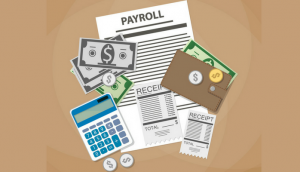New government data shows working from home is here to stay
Despite return-to-office mandates, new data shows that many Americans are still doing some or all of their work from home—and with a shorter workday.
BY Chris Morris
Four years ago, a sizable percentage of the U.S. workforce was trying to figure out how to get their jobs done from their homes. Today, many of those people couldn’t imagine working anywhere else.
New data from the Bureau of Labor Statistics (BLS) shows that 35% of employed Americans do some or all of their work from home now. Those 2023 numbers are roughly the same as those found in 2022 (when 34% did some or all of their work from home). That indicates that remote and hybrid work arrangements have become part of the normal state of the modern working world.
Pre-pandemic, the number of people who worked from home hovered at 24%.
The BLS data shows that home-based workers average a 5.1-hour work day compared to 7.9 hours for those who are in an office. That could reflect situational efficiencies home-based workers have, such as fewer meetings and distractions from coworkers—as well as a heightened ability to focus due to their environment.
Demographically, home-based workers of both genders worked roughly the same amount of time (both in overall percentage and hours per day). Among workers in the office environment, though, men tended to work 36 minutes more per day than women, the survey showed, which the BLS said was a reflection of the fact that more women have part-time jobs than men. (The vast majority of home-based workers were full-timers.)
Most home workers were fairly high earners, as well. The BLS says more than 54% of the people who work at home earn $1,876 or more per week, putting them near or above the $100,000-a-year mark. Almost half of the people who worked from home reported having multiple jobs. And more than half of the self-employed workforce ran their businesses from their home.
Remote work remains a high priority for job seekers today. A FlexJobs study found that 65% of people say they want to work remotely full-time. Employers, though, remain still resistant to the idea, though the return-to-office movement continues to move slower than most bosses would like.
In early July, Kastle’s Get America Back to Work monitor showed an average of 53.6% desk occupancy at offices, as detected by the use of employee check-ins with security devices. That number was slightly lower than previous weeks, likely due to the mid-week Fourth of July holiday. (The average hovered in the 60% range in the previous three weeks.)
At companies that are trying to get workers to return to the office, employees know how challenging it can be to convince your employer to let you work from home. Experts say your best bet, though, is to point to your productivity levels during the time you were working from home as well as how you collaborated with coworkers, despite your locations.
However, bringing up personal circumstances is generally not effective, they caution.
While many CEOs want workers back in the office (to the point that 30% say they will threaten to terminate employees who don’t return), studies have shown that allowing employees to work remotely or adopt a hybrid work model makes them more likely to be loyal to a company moving forward. Stanford researchers, earlier this year, discovered that letting someone work from home just two days per week made them 35% less likely to submit their resignation.
As an added bonus, those workers are more likely to get things done, as well. An October 2020 Gartner study found that performance improves when employees are given flexibility over where, when, and how much they work.

ABOUT THE AUTHOR
(6)
Report Post



